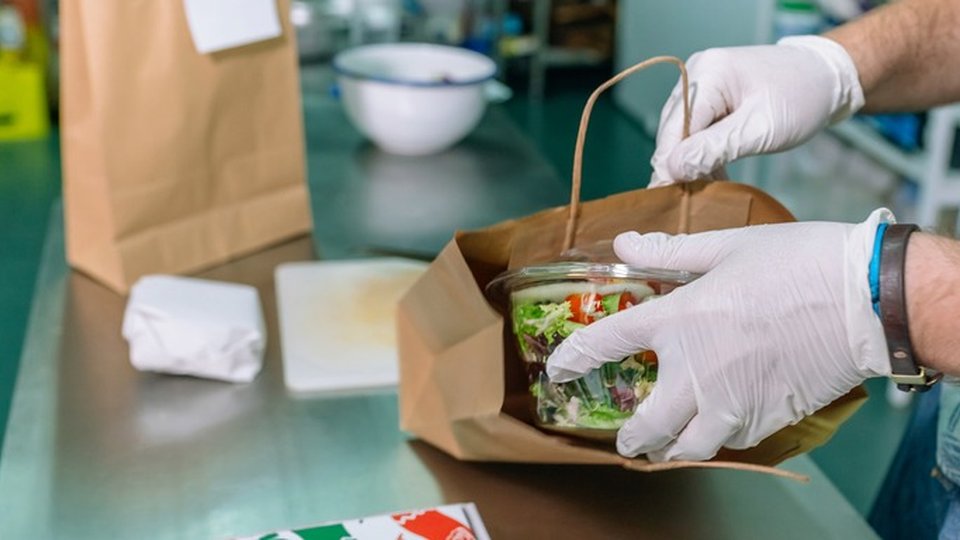Operations
7 steps to building food safety culture from scratch
For multi-location restaurants, building a culture of food safety is a crucial step toward consistently high standards across each location. Restaurant owners can use seven pillars to build and maintain a food safety culture from scratch.

October 15, 2021 by Doug Sutton — President, Steritech
According to the World Health Organization, nearly 600 million people fall ill after consuming contaminated food every year. Restaurants are facing labor shortages, high turnover rates, supply chain issues and changing COVID-19 protocols.
For multi-location restaurants, building a culture of food safety is a crucial step toward consistently high standards across each location. Restaurant owners can use seven pillars to build and maintain a food safety culture from scratch:
Pillar 1: Senior leadership commitment and engagement
Building a food safety culture requires buy-in from all stakeholders. When food safety programs are only extended to in-store employees, the senior leadership team is left out on a crucial part of business operations. In successful organizations, food safety leaders drive processes and programs that keep the entire organization up-to-date.
Wing It On, an expanding quick-service restaurant franchise, built the foundation for their food safety culture under the senior leadership level. "Aligning food safety under the corporate team early in our growth allows us to preserve standards and compliance and expand our footprint with only the highest standards of safety and cleanliness," said Justin Egan, CMO and Co-founder at WIO!. "Our fans should be confident that whenever they visit a Wing It On!, they can expect consistent quality, a delightful guest experience and the highest food safety and cleanliness practices without exception."
Pillar 2: Food safety communications
Clear, concise and open food safety communications is another key for building a successful food safety culture. The COVID-19 pandemic introduced many new changes to health and safety protocols. Restaurant owners should establish an open and constant communication process in order to ensure employees at every level have the most up-to-date food safety information. Using verbal and visual cues for guests is also a critical step when communicating food safety compliance.
Establish a plan and distribute physical copies of the plan to all employees and locations. Outline all food safety standards and procedures across a variety of channels. Ensure managers are not simply trained to "talk, the talk", but that they also "walk, the walk" as an everyday example for employees.
Pillar 3: Defined standards and procedures
Defined and documented standards and operating procedures establish the right way to operate and provide the foundation for consistency. This step requires a lot of time, dedication and a commitment from all parties, whether it's part-time employees, corporate executives or even food suppliers, but has proven to have a dramatic impact on food safety performance.
Chipotle, a finalist in this year'sFast Casual Excellence in Food Safety awards, attributes their defined standards as part of their food safety success. "We only partner with suppliers that meet our food integrity standards," said Kerry Bridges, Vice President of Food Safety at Chipotle. "Chipotle is committed to sourcing high-quality ingredients that are grown, raised and harvested with respect for people, animals and the land. We work to create and celebrate integrity in all aspects of our business, including how workers are valued and the way crops are grown, animals are treated, and the environment is impacted."
Pillar 4: Training
Training has always been an essential part of building a food safety culture. As the entire food industry landscape continues to shift in response to the global pandemic, now it may be more important than ever. Proper food safety training reinforces the fundamentals of food safety, while also providing real-world context to help employees understand the impacts their food safety actions can have, providing the "how" along with the "why". For multi-location and franchise establishments, consistent training is key to building a food safety culture.
Panda Express, the 2021 winner of the Excellence in Food Safety Awards is a prime example of establishing proper training across all employees and all locations. "When educating our teams, we explain why food safety is critical while stressing the importance of diligence with training," said Kenny Chuang, executive director of Food Safety and Quality Assurance at Panda Express. "Our training process includes auditory and visual methods, tactile instruction and hands-on learning. This guarantees comprehension of food safety terms, equipment and procedures across the board."
Pillar 5: Key Performance indicators/ scorecard
Establishing key performance indicators creates a measurable scorecard of actionable food safety goals. A scorecard of these KPIs should include third-party assessments, self-assessment scores and health department inspection scores. It should be easily understandable and visible across the organization, to every level of employee.
KPIs will help organizations track progress and changes over time. Consistent tracking of these metrics can uncover potential problem areas, company trends and areas of food safety excellence. KPIs also help senior leaders see return on investment, and allows all other employees to see where the organization is headed.
Pillar 6: Oversight program
Where the KPIs establish the "what" is to be measured, an oversight program tackles the "how" by monitoring, tracking, and analyzing operating practices against appropriate, clearly defined standards. This is what most organizations know as an audit or assessment program, whether internal or external. An effective program should help identify root causes and facilitate timely resolutions to protect customers and brand reputation.
Restaurants should consider bringing in a third-party assessment team as part of a food safety oversight program. These programs take public health inspections a step further by providing unbiased feedback and an insiders look at top industry standards. These insights will promote confidence and can be used to cultivate a culture of excellence that will attract both new and returning customers.
Pillar 7: Positive recognition
Traditional food safety programs typically focused on the bad, or non-compliance, findings. Results were often penalized consequences for the operator, franchisee, and even employee: loss of incentive, loss of opportunity to invest in additional locations or for some team members at the store level, loss of job. This can lead to the development of behaviors that don't eliminate risks, but instead, cover them up.
Instead, use positive recognition to reinforce good behaviors and send the message that excellent food safety will be rewarded. Positive recognition boosts morale and creates pride, which ultimately embeds itself into the culture. Find unique, organizational ways to drive this culture of food safety: team competitions, gamification, individual praise and of course celebrations can all be motivating and harness the collective spirit of an organization to make food safety a priority in every action that is taken.
Building a culture of food safety excellence isn't easy, especially in today's ever-changing food industry landscape. Restaurant owners can use these seven pillars as a benchmark towards establishing their own unique brand plan that encourages food safety excellence every time, everywhere.












